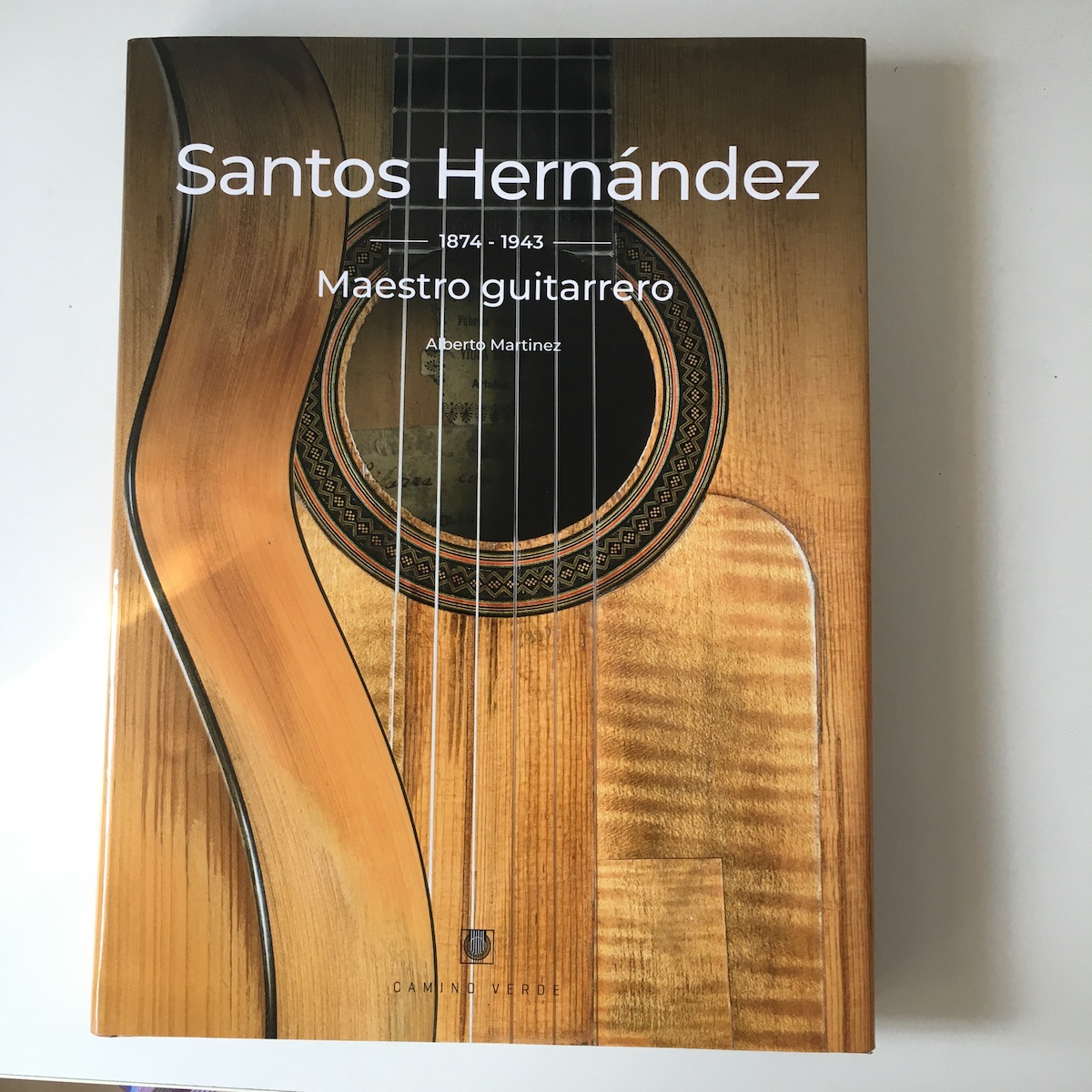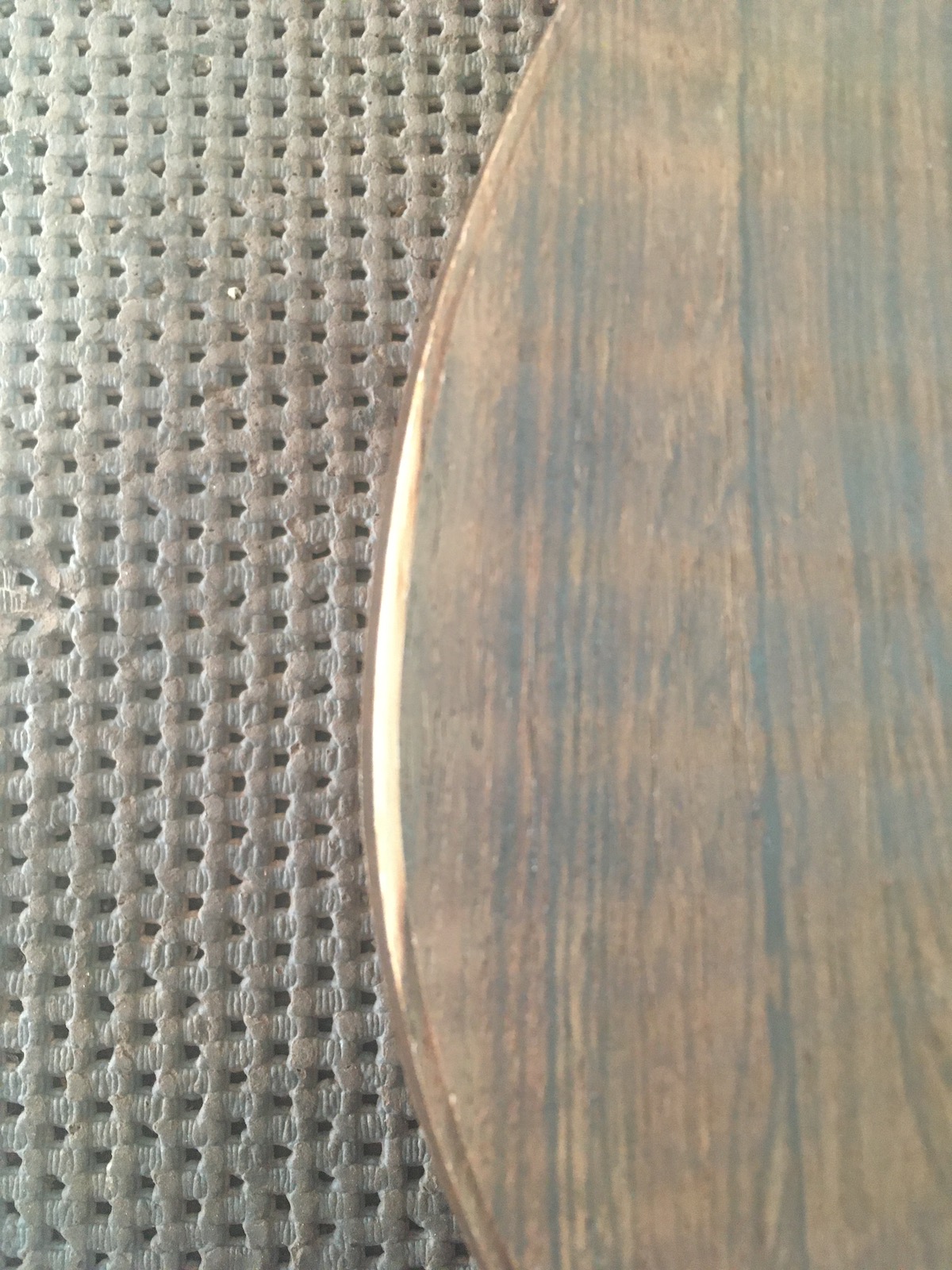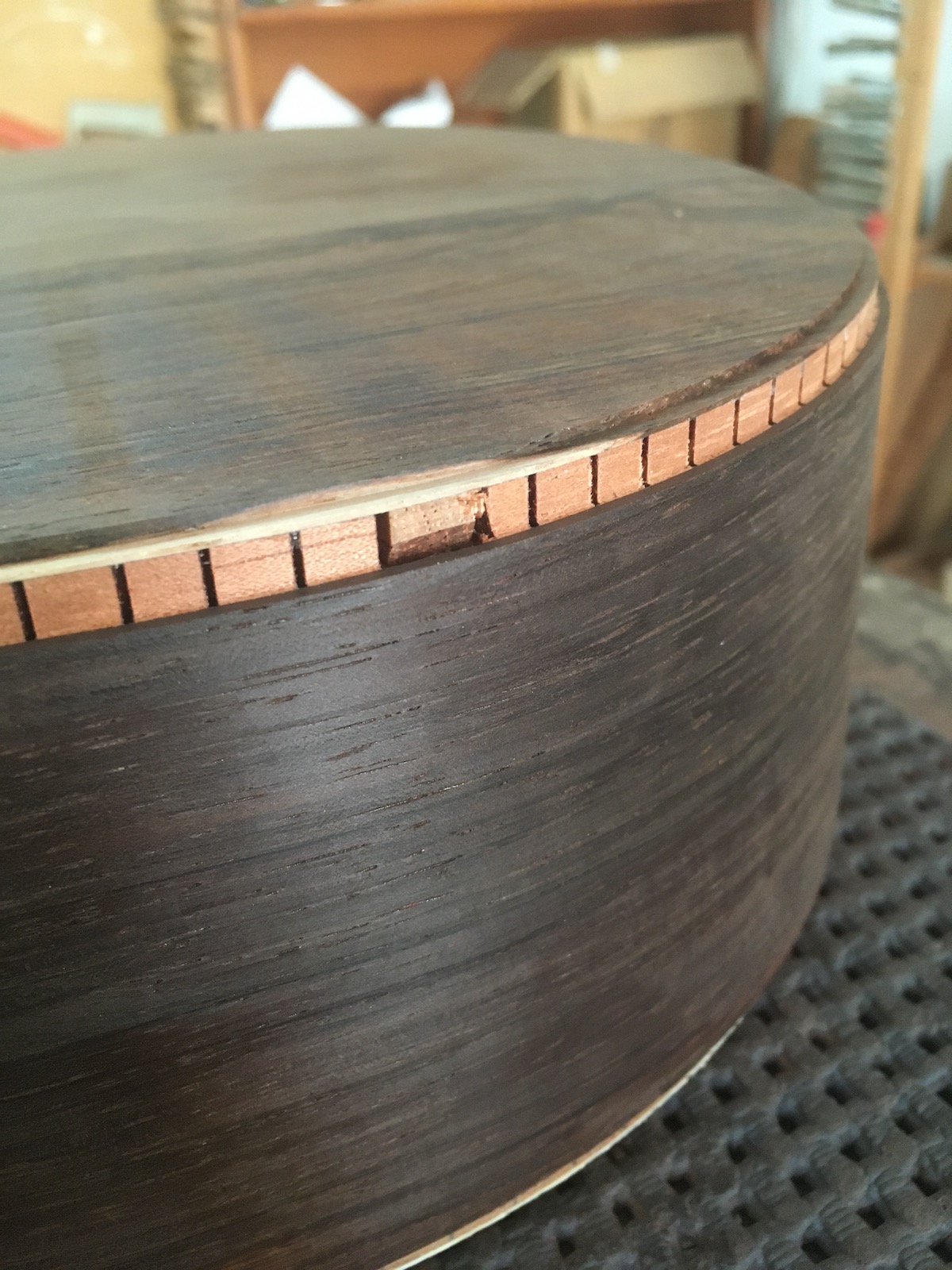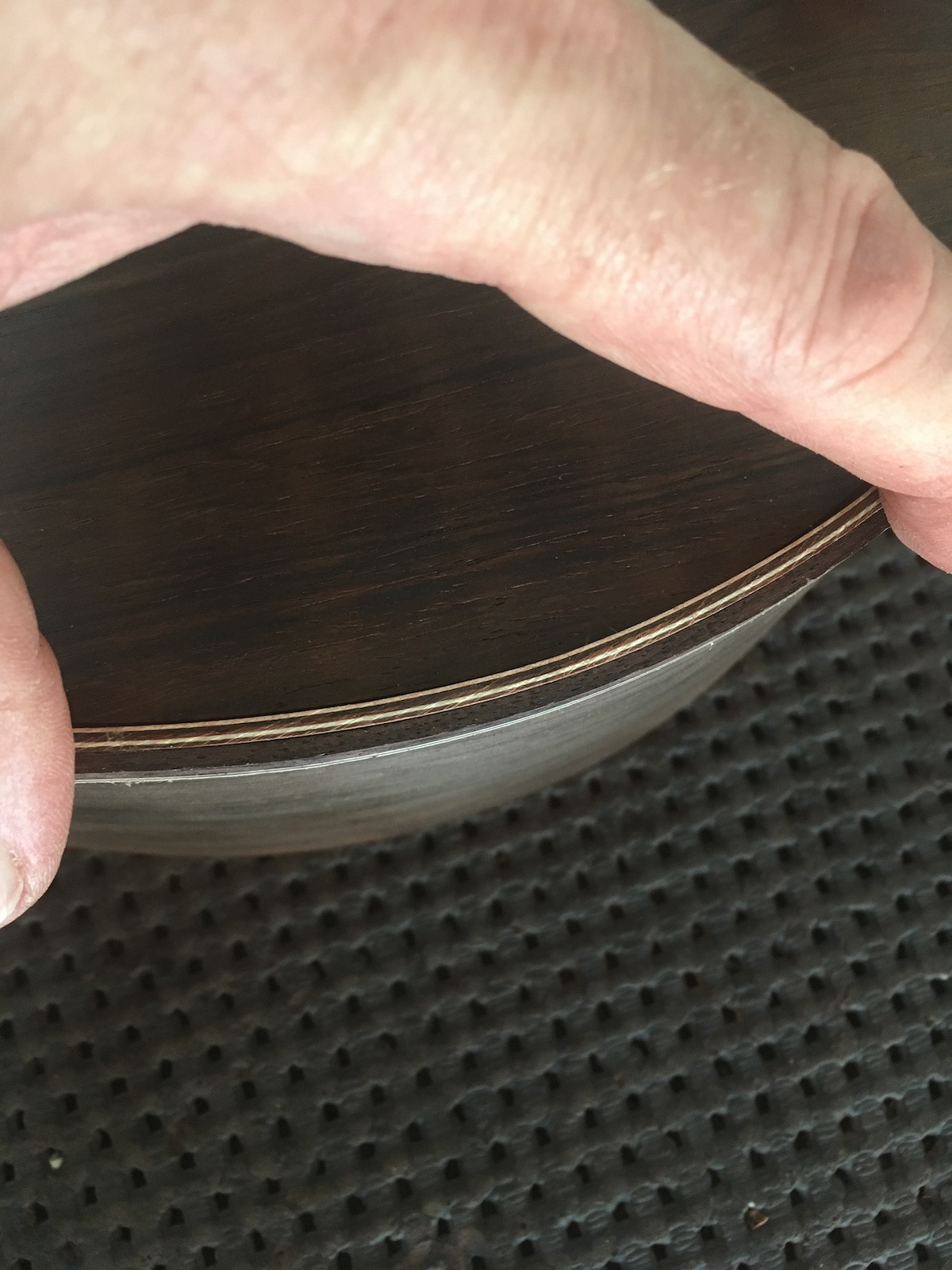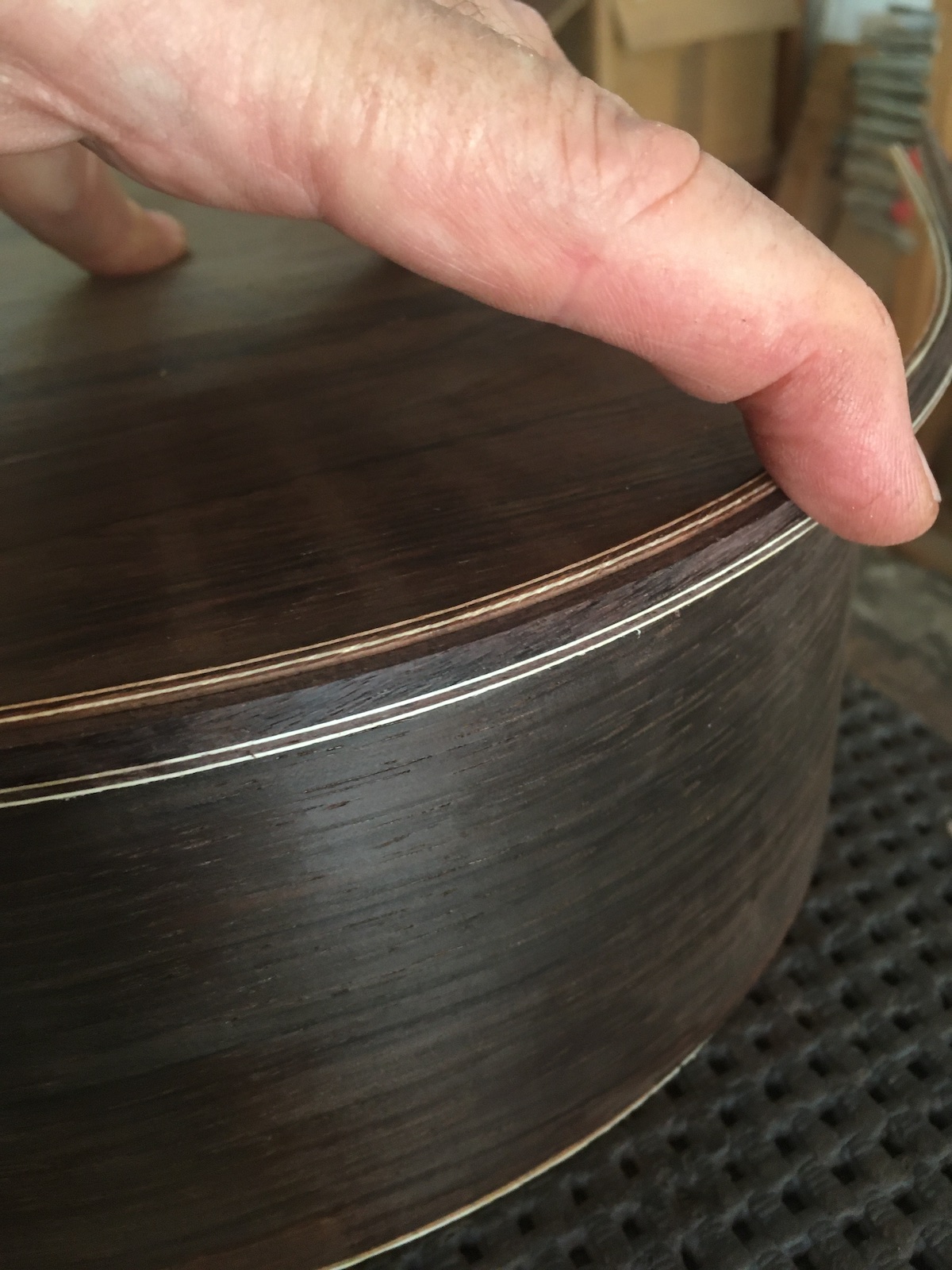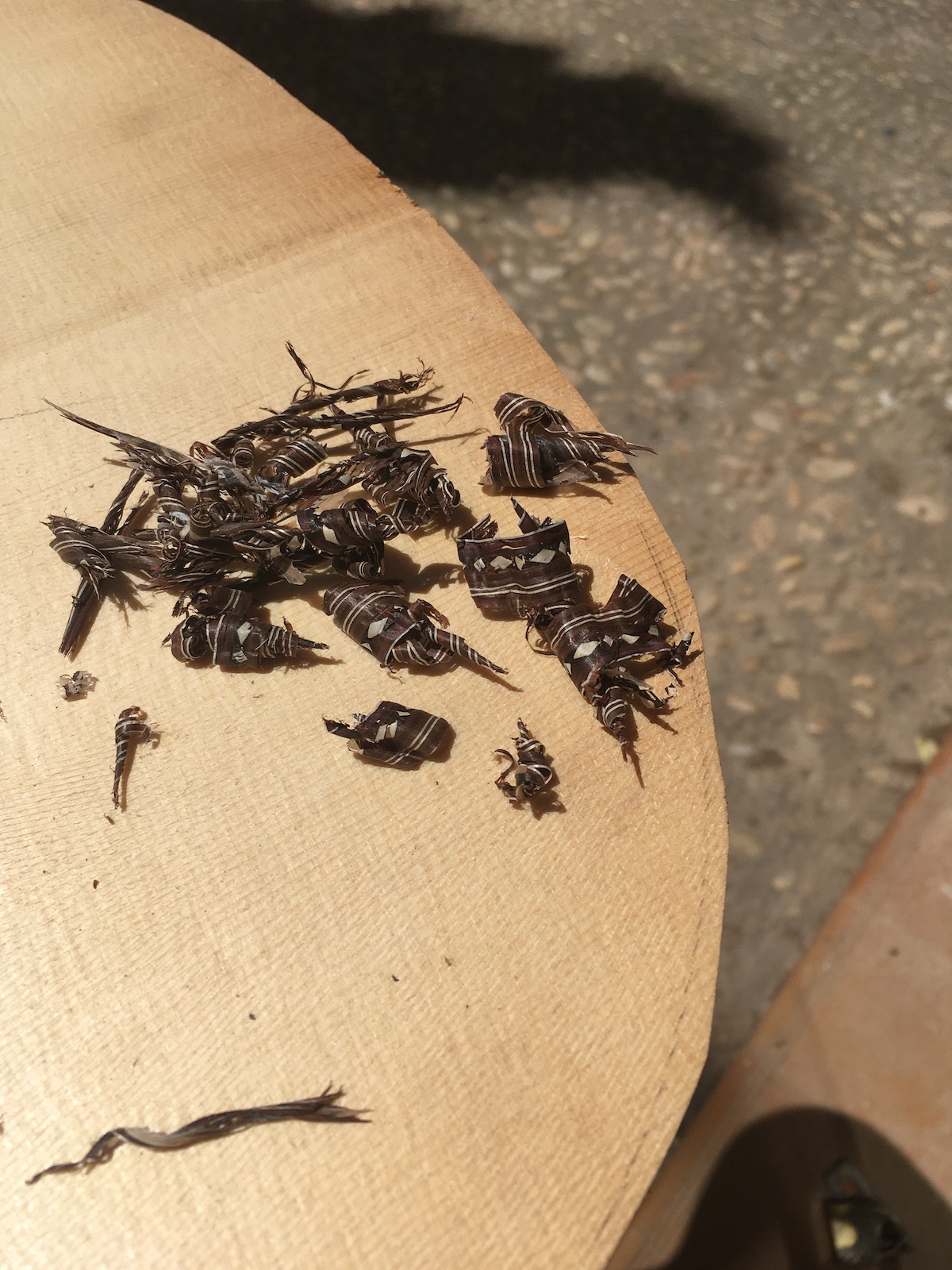Nothing out of the ordinary today but I just wanted to illustrate how nicely this worked out. This back had some sapwood which is nice if symmetric but that was not the case. It was very narrow to start with so I had to use it with the sapwood. However, as you can see, I glued the narrow back on with very little margin for error but it worked out perfectly. The binding and purfling will just cover up the sapwood. I have some fantastic wood in my stock but most of it has some kind of detail that will make me have extra work when I use it.
Tag Archives: artisan
Top jointing
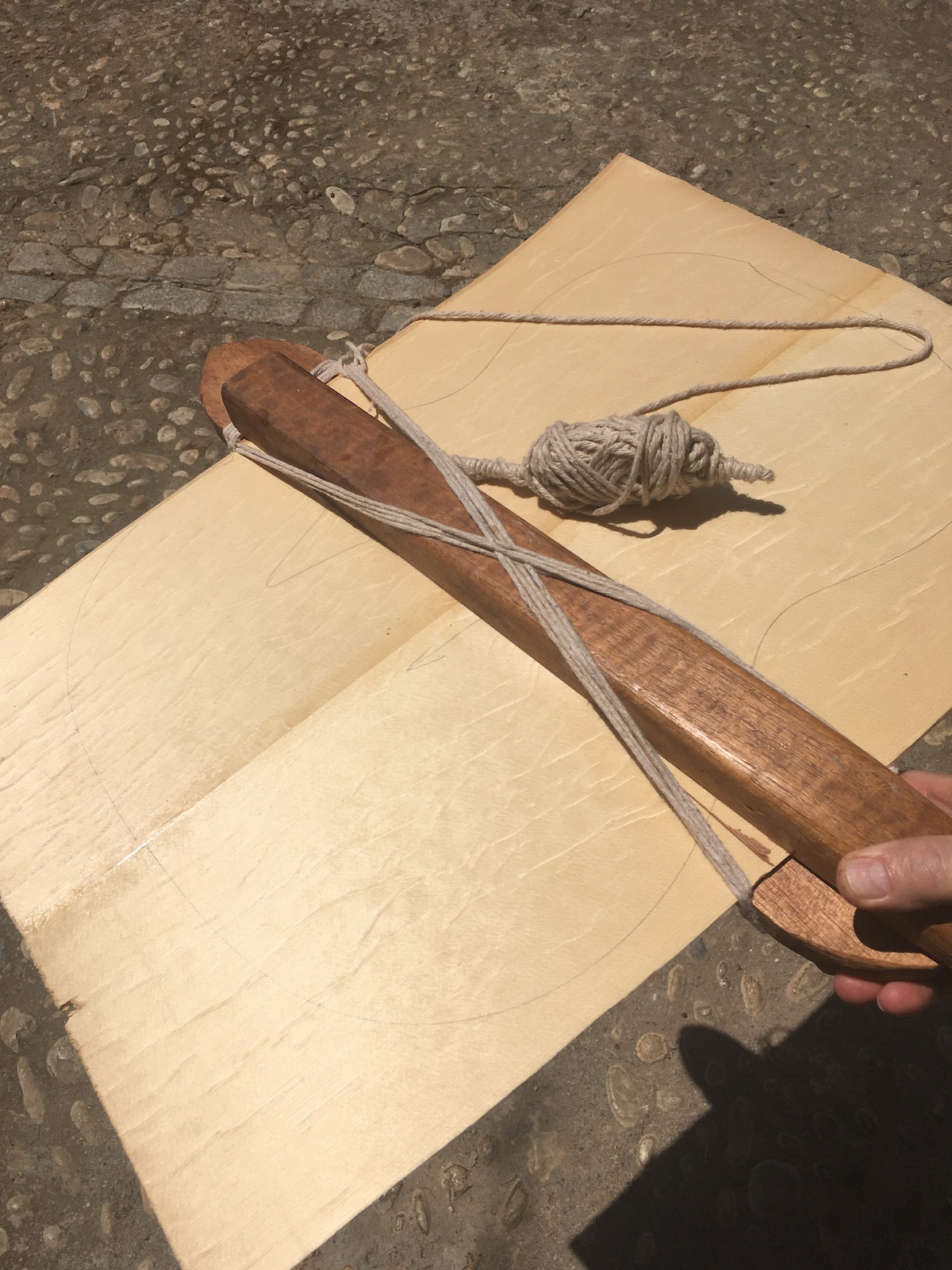 The secret to a good glueing technique is to check if the joint is closed under pressure. Here in Granada some joints are tested by trapping a strip of thin paper between the two pieces to be glued while approximating the pressure that will be used to clamp it. This is common with the bridge and the fretboard. In these cases we are very interested in the edges of the joint as they like to peel up. This can involve removing a hint of wood from the inside of the footprint so that the edges are in solid contact while the rest is pulled in by the clamping pressure and the action of the glue drying. This is very subtle and you never remove so much wood that there is problematic deformation.
The secret to a good glueing technique is to check if the joint is closed under pressure. Here in Granada some joints are tested by trapping a strip of thin paper between the two pieces to be glued while approximating the pressure that will be used to clamp it. This is common with the bridge and the fretboard. In these cases we are very interested in the edges of the joint as they like to peel up. This can involve removing a hint of wood from the inside of the footprint so that the edges are in solid contact while the rest is pulled in by the clamping pressure and the action of the glue drying. This is very subtle and you never remove so much wood that there is problematic deformation.
With jointing a top or back it doesn’t matter what method you use but your planing should cater to the clamping method you use. Clamp the joint dry and test for movement all along the joint. I do this each time I glue one up. This is one of the reasons I use the method I do: it is quick for testing. If I “candle” the joint with no pressure there is a bit of light coming through the centre portion but with the clamping pressure applied it is difficult to shift all the way along.
Fitting the Fretboard
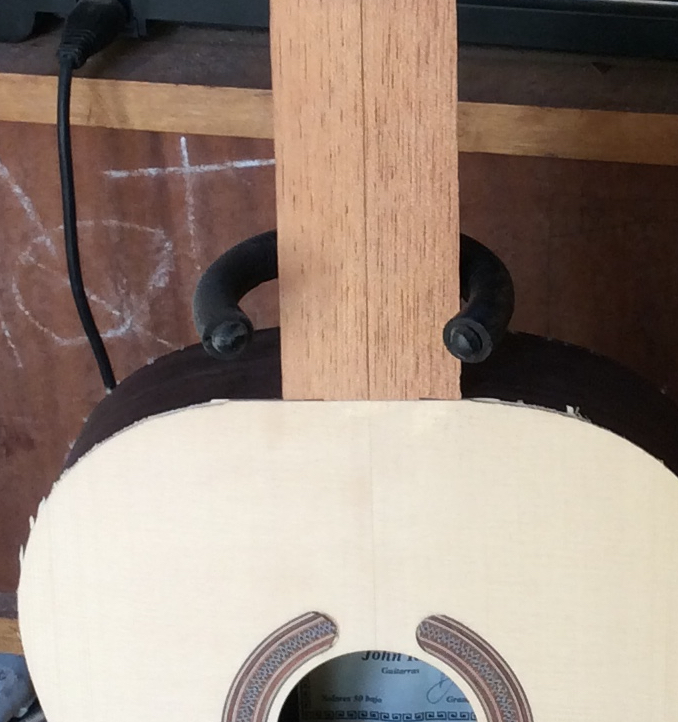 Many guitars are made with an upward (forward) tilt to the neck or a domed upper bout or both. So, when you place a straightedge from nut to soundhole you find a low spot at the neck joint. If this is the case in your construction you cannot just press the fretboard down and have good contact all the way along. The most likely spot for problems is right where the neck meets the top. I have seen a technique that involves removing ebony from certain places in order to allow it to make contact with the entire surface. However, this is not the traditional method. The spanish technique makes use of the easy workablility of the top and neck woods and the flexibility of ebony. Ebony is very hard but despite what you might think from seeing the strips of it glued into guitar necks it is neither strong nor stable. In fact, ebony is probably the worst material you can use for re-inforcing a neck.
Many guitars are made with an upward (forward) tilt to the neck or a domed upper bout or both. So, when you place a straightedge from nut to soundhole you find a low spot at the neck joint. If this is the case in your construction you cannot just press the fretboard down and have good contact all the way along. The most likely spot for problems is right where the neck meets the top. I have seen a technique that involves removing ebony from certain places in order to allow it to make contact with the entire surface. However, this is not the traditional method. The spanish technique makes use of the easy workablility of the top and neck woods and the flexibility of ebony. Ebony is very hard but despite what you might think from seeing the strips of it glued into guitar necks it is neither strong nor stable. In fact, ebony is probably the worst material you can use for re-inforcing a neck.
Fitting the fretboard to the neck and top of the guitar involves modifying not the ebony but rather the neck and top surface. Instead of two planes that meet at the neck joint you create a long, shallow curve. Most of the work will be on the neck, scooping it with scraper and sandpaper. Then, when you press the ebony down it will make good contact at all points. Everything we know about making good joints applies here so make sure at least one of the surfaces is slightly concave laterally and use a thin hide glue. Heat one of the pieces (or both) and do your best to have freshly worked surfaces. Before glueing, test that moderate pressure to the ebony will close the gap to the point where a thin paper strip is trapped at all points. Use newsprint or cigarette paper. You will learn that the most difficult edges are along the top near the neck. It bears repeating that the ebony will conform easily to this curve and you will not be modifying your hard earned neck angle by doing things this way.
New book about Santos
I got this from Camino Verde just a few days ago. I am looking forward to the great photos and any new information it might contain. These books by Alberto Martinez are quite wonderful and it is an honour to have some of my writing included in a few of them.